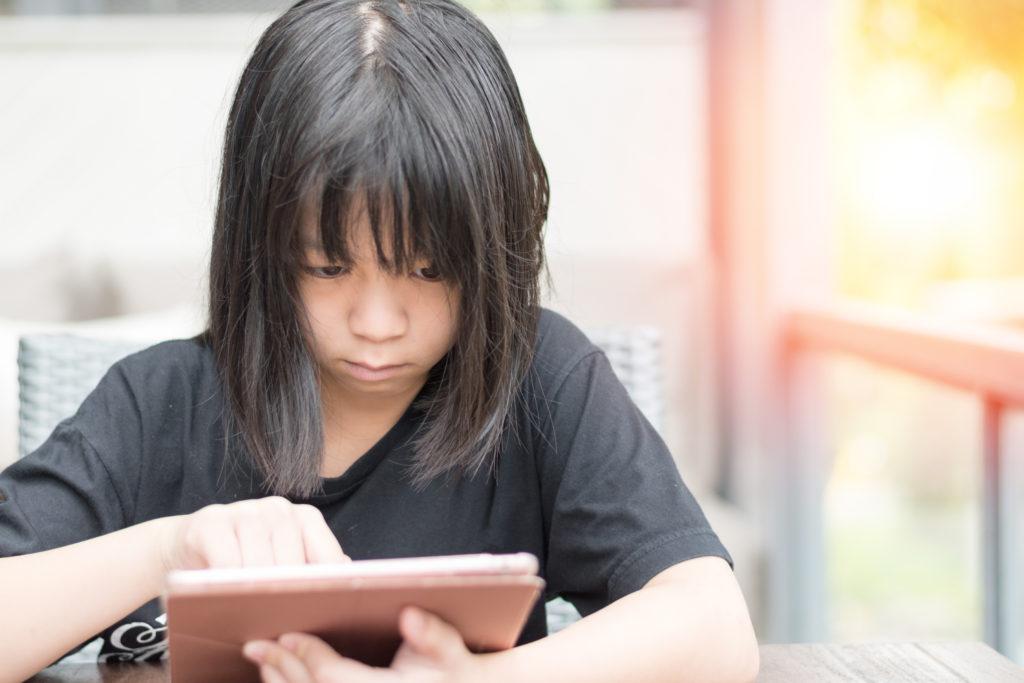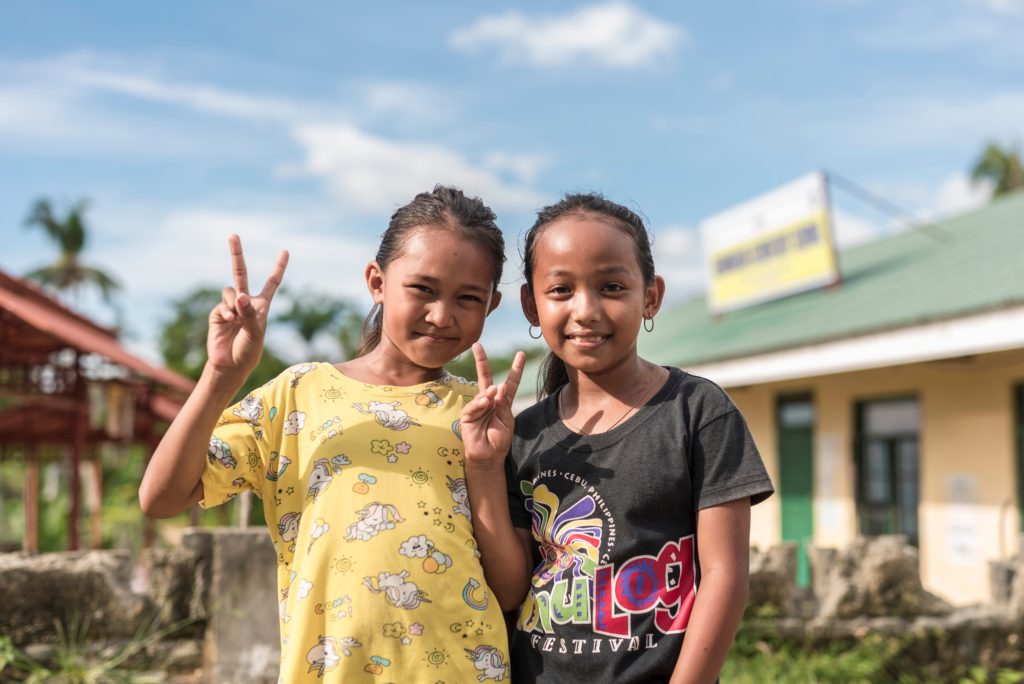The Philippines has become one of the most prominent global hubs for livestreamed child sexual abuse. Fueled by extreme poverty, family complicity, and unchecked internet expansion, children are exploited in real-time for foreign predators. Weak enforcement and corruption leave a large number of children at risk, with survivors facing lifelong trauma. Without stronger laws and victim support, this crisis will only escalate.
The alarming increase in child exploitation in the Philippines
The Philippines began to emerge as a global hub for the online sexual exploitation of children (OSEC) in the early 2010s. A clear sign of this trend was the sharp rise in internet-based abuse cases between 2014 and 2017. A study by the International Justice Mission (IJM) found that the number of Philippine IP addresses tied to this type of abuse jumped from about 23,000 in 2014 to over 81,000 in 2017, representing a 250% increase (IJM, 2020).
The country’s emergence as a hotspot for OSEC has been attributed to several factors, including widespread poverty, high English proficiency, affordable internet access, and the availability of digital payment systems. These conditions have made it easier for foreign offenders to commission and view live-streamed abuse, often facilitated by relatives or acquaintances of the victims (IJM, 2020).
According to Searchlight 2025, a report by Childlight, the problem of online child exploitation is becoming more complicated due to the rise of “hidden at-risk populations.” These include children from single-parent families who are targeted through dating apps, as well as those displaced by war, disaster, or other humanitarian crises, making them more vulnerable to online predators (Childlight, 2025).
As part of the Searchlight 2025 research, a multi-country study involving 5,000 men found that child sex offenders were nearly four times more likely to use dating platforms than non-offenders. This highlights how digital tools originally designed for adult relationships are increasingly being exploited to reach and manipulate vulnerable families (Childlight, 2025).
Normalization of abuse
Beyond online grooming, socio-economic conditions in countries like the Philippines have made communities particularly susceptible to online child exploitation. Endemic poverty has driven some families to turn to abuse as a source of income. In such cases, the exploitation may even involve incestuous acts, with earnings from just a few days of webcam exploitation equaling a year’s wages (Denya, 2025).
In Cebu, a region heavily affected by this trend, local officials and NGOs report that some families justify these acts by claiming they are not “real abuse” because there is no physical contact involved. This belief, however, is dangerously misleading. The impact of on-camera abuse is deeply traumatic and long-lasting. Victims often suffer from depression, disordered sleep, and a damaged sense of intimacy (Kuntz, 2014).
Moreover, according to Terre des Hommes, the psychological consequences of online sexual abuse mirror those of physical sexual assault. Children coerced into stripping or performing sexual acts in front of a webcam, often by their own family members, struggle to process what has happened to them, especially when the abuse is normalized or framed as economic necessity (Kuntz, 2014).
In Cebu, families have at times shared laptops or rented out children for so-called “show-shows” or “chit-chats”, local euphemisms that minimize the gravity of the abuse. As one survivor, Mary Rose, recounted, a single livestream could earn her 2,000 pesos (around $44), and demand was often high enough to support multiple girls performing night after night (Kuntz, 2014).
Understanding the current state of online child exploitation
The Scale of Harm study, led by the International Justice Mission (IJM) in collaboration with the University of Nottingham’s Rights Lab, provided the first comprehensive insight into the widespread nature of this crisis. Utilizing national surveys, survivor testimonies, and expert analysis, the study revealed the scale and growth of child trafficking in the Philippines (IJM, 2023).
“What we’ve seen through the Scale of Harm is the sickening scale of abuse. Child protection urgently demands increased tech sector detection, reporting, a duty of care, safety by design, transparency and accountability, along with improved law enforcement responses.”
– John Tanagho, Executive Director of IJM’s Center to End Online Sexual Exploitation of Children
Evidence from financial reports indicates that this issue spans multiple nations. Since 2015, the United States has consistently generated the highest volume of suspicious financial transactions linked to online child exploitation in the Philippines. The United Kingdom, Australia, and Canada follow, with Australia and Canada ranking third and fourth, respectively, throughout this period (IJM, 2023).
In response to this crisis, international law enforcement agencies have intensified their efforts. One of the earliest coordinated global crackdowns, Operation Endeavour (2012), set an important precedent in combatting livestreamed child sexual abuse. This investigation, carried out by the U.K.’s National Crime Agency (NCA), the Australian Federal Police (AFP), and U.S. Immigration and Customs Enforcement (ICE), led to 29 arrests and the rescue of 15 children (ICE, 2014).
Despite ongoing efforts, online child exploitation continues to escalate across Southeast Asia today. As highlighted during the 2024 ASEAN ICT Forum on Child Online Protection in Bali, countries such as the Philippines, Cambodia, and Thailand are still witnessing growing rates of digital abuse. A major 2022 study by ECPAT, UNICEF, and Interpol underscores the urgency of the issue, revealing that one in five Filipino children aged 12–17 had already experienced online sexual abuse (Landry, 2024).
One particularly troubling trend is the failure of victims to report abuse due to fear of stigma or blame. Survivors across Southeast Asia described being dismissed or judged by authorities. In one case, a child was blamed by police for the abuse they suffered. These systemic failures highlight the need for trauma-informed responses and trust-building within law enforcement systems (Landry, 2024).
The lasting impact on children’s lives and rights
This vast criminal network preys on the most vulnerable, with over half of those affected being children aged 12 or younger, and some victims as young as a few months old. Tragically, many of these children endure prolonged abuse, often lasting an average of two years before being rescued (IJM, 2023).
The repercussions of this exploitation are profound and long-lasting, violating a spectrum of children’s rights enshrined in the United Nations Convention on the Rights of the Child (CRC). Psychological trauma, diminished self-esteem, post-traumatic stress disorder, and suicidal ideation are frequent consequences, with many children experiencing educational disruptions and severe mistrust towards adults (Gill, 2021).
Survivors often face profound stigma and social isolation within their communities, which exacerbates feelings of shame, guilt, and helplessness. This social marginalization also hinders their ability to access support networks and rebuild trust with others. Family reintegration, which is commonly pursued as a pathway to recovery, can be complicated by vulnerabilities such as poverty, dysfunctional family dynamics, and the complicity of family members in the exploitation (Roche et al., 2023).
The 2024 study called “Online Sexual Abuse and Exploitation of Children in the Philippines” found that Filipino youth continued to experience significant mental health challenges after reintegration. Caregivers reported more behavioral issues in those placed in non-familial settings and greater emotional distress in children trafficked by strangers compared to those exploited by relatives (Scroger et al., 2024).
Cassie’s story gives emotional depth to these findings, illustrating both the harsh realities and the resilience of survivors. At just 12 years old, she was lured by a trusted family friend with promises of opportunity, only to endure years of online sexual exploitation. Her rescue by local authorities marked a turning point, beginning a long and difficult journey toward healing. With consistent care, legal support, and acceptance from her community, Cassie transformed from victim to advocate (IJM, 2022).
“When they rescued us, it made me heal all the pain… In [aftercare], I realized you don’t have to lose hope. If I meet a victim like us, I want to comfort her, help her move forward. Fight for your rights—that’s where I stand now.”
– Cassie, survivor of online sexual exploitation of Children (OSEC)
The evolving threats to Filipino children online
As internet access has expanded, so too have the risks. Many minors are targeted by predators on platforms like Facebook, TikTok, and Instagram, facing blackmail, coercion, or having intimate images shared without consent. Some children even sold explicit images of themselves just to afford smartphones or internet access for remote learning, sometimes for as little as 150 pesos (around $3) (Ratcliffe, 2022).

As technology evolves, so do the methods of exploitation. According to Searchlight 2025, a report by Childlight, the emergence of AI-generated child sexual abuse material (CSAM) poses a rapidly growing and largely unregulated threat. Offenders are using generative AI to create hyper-realistic images that do not depict real children, exploiting legal loopholes in countries where synthetic child abuse material is not yet clearly regulated (Childlight, 2025).
In response, Philippine authorities are taking preventive action. The Philippine National Police (PNP) announced in spring 2025 that they are collaborating with international partners, including South Korea, to develop detection tools for AI-generated CSAM. Although no confirmed cases have surfaced in the Philippines to date, law enforcement is preparing to counter this emerging threat (Bajo, 2025).
That same month, the Philippine Senate opened a major inquiry into OSEC, acknowledging the country’s paradoxical role as both an epicenter of abuse and a leader in reform. The International Centre for Missing and Exploited Children (ICMEC), a key participant in the hearings, warned that demand-driven abuse is escalating rapidly while law enforcement continues to face challenges in analyzing digital evidence (Childlight, 2025).
Building a strong network against online child exploitation
As a signatory to the United Nations Convention on the Rights of the Child, the Philippines is legally obligated to protect children from all forms of online sexual exploitation and abuse (OSEC). This responsibility includes ensuring comprehensive support for survivors and enforcing strict penalties for perpetrators, as outlined in Republic Act 11930—the Anti-OSEC Law (Panti, 2025).
However, the rapid growth of internet access in the Philippines has outpaced legal frameworks, leaving significant gaps in protection. In response, ICMEC convened a working group to assist in updating the Republic Act 11930. The revised law mandates that Internet Service Providers preserve and remove child sexual abuse material (CSAM), holds digital platforms accountable for illegal content, and establishes a centralized national reporting system (ICMEC, 2022).
In tandem with legislative reform, the Philippines has built a robust network of front-line responders: cybercrime investigators, prosecutors, and specialized courts, working relentlessly to pursue offenders and support survivors. Yet the emotional burden on these professionals is immense, as they are frequently exposed to traumatic material in the course of their duties (UN, 2024).
Despite progress in enforcement and coordination, survivor aftercare remains one of the most overlooked aspects of the response. Government agencies, NGOs, and community leaders must prioritize survivor-centered programs that promote healing and successful reintegration, including trauma-informed counseling, life skills training, and long-term case support. Public education campaigns are also essential to reduce stigma and foster a culture of acceptance and protection (Roche et al., 2023).
To truly break the cycle of exploitation, local governments and civil society organizations must expand economic empowerment initiatives, such as sustainable livelihood programs, that support not only survivors but also families at risk. Only through sustained, coordinated action across legal, social, and economic systems can we fully address the needs of survivors and build pathways toward lasting recovery (Roche et al., 2023).
As part of our commitment to protecting children online, Humanium actively contributed to the United Nations‘ development of policy guidelines designed to combat online child abuse. Our input focused on strengthening legal protections, improving digital safety measures, and upholding children’s rights to privacy and safe internet access.

Building on this work, we remain steadfast in our mission to promote children’s right to safety and dignity in the digital world. If you share our vision of a safer internet for every child, please support us by donating, volunteering, or becoming a member.
Written by Lidija Misic
Bibliography:
Bajo Anna Felicia (2025), PH developing tools to combat AI-generated child abuse materials. Retrieved from GMA Integrated News at PH developing tools to combat AI-generated child abuse materials at https://www.gmanetwork.com/news/topstories/nation/904738/ph-tools-ai-generated-child-abuse-materials/story/, accessed on June 1, 2025.
Childlight (2025), Who Benefits? Shining a Light on the Business of Child Sexual Exploitation and Abuse. Retrieved from Childlight at https://www.childlight.org/uploads/publications/searchlight2025/Childlight_Searchlight_Report_2025.pdf, accessed on June 1, 2025.
Denya Sokomondo Tadios (2025), Philippines grapples with online child sexual abuse. Retrieved from DevelopmentAid at https://www.developmentaid.org/news-stream/post/191741/philippines-online-child-sexual-abuse, accessed on May 20, 2025.
Gill Melinda (2021), Online Child Sexual Exploitation in the Philippines: Moving beyond the current discourse and approach. Retrieved from the Anti-Trafficking Review at https://antitraffickingreview.org/index.php/atrjournal/article/download/544/420, accessed on May 20, 2025.
ICE (2014), 29 arrested in international case involving live online webcam child abuse. Retrieved from ICE at https://www.ice.gov/news/releases/29-arrested-international-case-involving-live-online-webcam-child-abuse, accessed on May 21, 2025.
ICMEC (2022), Hope for a Safer Internet: How the Philippines is Protecting Children Through Proactive Legislation. Retrieved from Medium at https://icmec.medium.com/hope-for-a-safer-internet-how-the-philippines-is-protecting-children-through-proactive-legislation-ebebda635d3e, accessed on May 21, 2025.
IJM (2020), Study reveals dramatic rise in the prevalence of internet-based child sexual exploitation in the Philippines. Retrieved from IJM at https://www.ijm.org/news/study-reveals-dramatic-rise-in-the-prevalence-of-internet-based-child-sexual-exploitation-in-the-philippines, accessed on June 1, 2025.
IJM (2022), Help rescue victims of sexual exploitation like Cassie. Retrieved from IJM at https://www.ijm.org/stories/cassie, accessed on May 21, 2025.
IJM (2023), 1 in 100 Children Sexually Exploited in Livestreams, New Abuse Images and Videos in the Philippines Last Year, Driven by Foreign Demand. Retrieved from IJM at https://www.ijm.org/news/1-in-100-children-sexually-exploited-livestreams-new-abuse-images-videos-philippines-last-year-driven-by-foreign-demand, accessed on May 20, 2025.
Landry Guillaume (2024), ASEAN must do more to protect children from online sexual abuse. Retrieved from the Jakarta Post at https://asianews.network/asean-must-do-more-to-protect-children-from-online-sexual-abuse/, accessed on June 1, 2025.
Kuntz Katrin (2014), The Lost Children of Cebu. Retrieved from Spiegel International at https://www.spiegel.de/international/world/how-a-city-in-the-philippines-is-combatting-the-plague-of-child-porn-a-958390.html, accessed on May 21, 2025.
Panti T Llanesca (2025), Online sexual abuse of children increased to 2.7M —CHR report. Retrieved from GMA Network at https://www.gmanetwork.com/news/topstories/nation/943495/online-sexual-abuse-of-children-increased-to-2-7m-report/story/, accessed on May 20, 2025.
Ratcliffe Rebecca (2022), One in five older children in the Philippines suffer online sexual abuse, study says. Retrieved from The Guardian at https://www.theguardian.com/world/2022/apr/21/one-in-five-older-children-philippines-online-sexual-abuse-study., accessed on May 20, 2025.
Roche Steven et al. (2023), Online sexual exploitation of children in the Philippines: A scoping review. Retrieved from ScienceDirect at https://www.sciencedirect.com/science/article/pii/S0190740923000567, accessed on May 20, 2025.
Scroger Megan et al. (2024), Online sexual abuse and exploitation of children in the Philippines: An exploratory study of outcomes after reintegration into the community. Retrieved from ScienceDirect at https://www.sciencedirect.com/science/article/abs/pii/S0145213424001959, accessed on May 20, 2025.
UN (2024), First Person: Philippines ‘cyber cops’ tackle explosion of online child abuse. Retrieved from UN at https://www.unodc.org/unodc/en/frontpage/2024/June/first-person_-philippines-cyber-cops-tackle-explosion-of-online-child-abuse.html, accessed on May 21, 2025.


